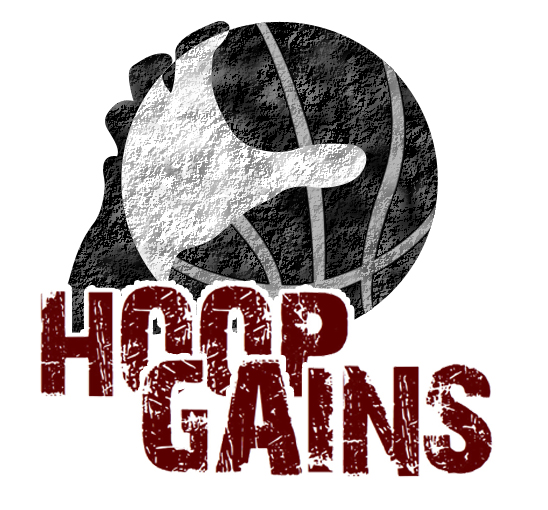5 Workout Tips Players Should Know (From "Practice Perfect" By Doug Lemov)
/I just finished reading a fantastic book called Perfect Practice by Doug Lemov. Here are some of my takeaways:
Don’t learn to proficiency, learn to automaticity.
Most players stop when they get the hang of something. Then they move onto the next thing. They chase new dribble moves and fancy fadeaways at the expense of true mastery of the fundamentals. Why do we do this?
It’s much more exciting to go from novice to proficient than it is to go from proficient to master. The novice to proficient journey is new and exhilarating. You make bigger, obvious improvements which naturally fuels your motivation.
But once you reach proficiency, the novelty wears off and visible improvement slows down. This is often why players move on once they “know how to do it." But for the fundamental skills that form the foundation of the game, it’s vital that you keep going until you reach automaticity.
You need to be able to perform the skills in stressful environments while distracted by other variables because that’s what a game requires. If other variables—defenders, time and score, shot clock, play call, etc.—demand your attention, then you better have learned that skill to automaticity. If not, you'll either have to sacrifice performance of the skill itself or awareness of the other variables going on in the game.
Creativity is derived from repetition.
Many people incorrectly think that creativity is a stroke of genius or an inborn trait. In reality, we can unlock our creative performance through repetition. The link is as follows: repetition of a skill creates automaticity and automaticity leads to creative performance.
But wait, you’re probably asking, how could automaticity lead to creativity? When I first encountered this idea, I was confused too. I equated automaticity with being a robot, and robots aren’t creative. Josh Waitzkin’s book The Art of Learning and Lemov’s Practice Perfect convinced me otherwise.
Lemov describes this link between automaticity and creativity below,
"Athletes and other performers often describe how, after a certain amount of experience and practice, the game “slows down” for them. What this means is that at certain points in the game their mind has gotten access to new processing capacity because complex actions have come to require a smaller percentage of available capacity.”
The key is how you divide up your attention. If it requires all your attention to simply dribble the ball without losing control of it, you don’t have the cognitive capacity to scan the court for teammates and make creative passes. But once you've automated the skill of dribbling, you can now divert your attention to reading the floor and seeing the game, which will unlock the ability to make creative plays.
Be intentional about the skills you’re training.
Do you know what skills it takes to be a great player? Have you spent time thinking about how to train those skills?
The 80-20 principle states that 80% of the results come from 20% of the inputs. Do you know what basketball skills are part of the 20%? And subsequently, do you spend adequate timing training those important skills?
Most players don’t think this deeply about their training. They go to the gym and work on skills that are either a) the most fun, b) look the coolest, or c) the easiest. If you’re serious about improving, you have to be intentional about training the skills that will give you the most bang for your buck.
It drives me crazy when I see players who shoot under 30% on catch and shoot 3’s practicing step backs. That's wasted time and energy. Being able to shoot off the catch is a massively valuable skill that has a way bigger impact on your performance than shooting step backs. It stretches the floor for your teammates and opens up your driving game by forcing defenders to play closer to you. But yet, these players are spending time on peripheral skills when they still struggle mightily with the core skills.
Set the objective first, then choose the drill.
Your objective should be the organizing factor in your training. Often, however, players put together a handful of drills and call it a workout. This shotgun strategy is easier because it requires less thought and planning, but it’s far less effective.
Before each workout, choose an objective first, then choose the drills that will help you reach that objective.
When you get something wrong, immediately go back and fix it.
Check out this quick video of Steph Curry (https://www.youtube.com/watch?v=rxsdiusm1NQ)
At the 1 minute mark of the video, the narrator says something that stands out to me. “When the workout actually started, he was meticulous with everything that he did. He made sure he had perfect footwork. He made sure he had perfect shooting form. If he did anything and it wasn’t perfect, he did it over again. And he didn’t need a coach to tell him, he just did it.”
When Steph was working out and he made a mistake in a drill, he immediately went back and fixed it. That kind of attention to detail and pursuit of excellence is rare and extremely valuable.
One reason why it’s so important is that by immediately going back and correcting his error, Steph is shortening the feedback loop. The quicker the feedback loop the better. As Lemov puts it, “with feedback, it turns out, speed is critically important—maybe the single most important factor in determining success.”
Feedback is crucial. Without it, how else can we know if we’re getting better? So leveraging feedback to be as effective as possible is an important way to boost the effectiveness of your practice.

